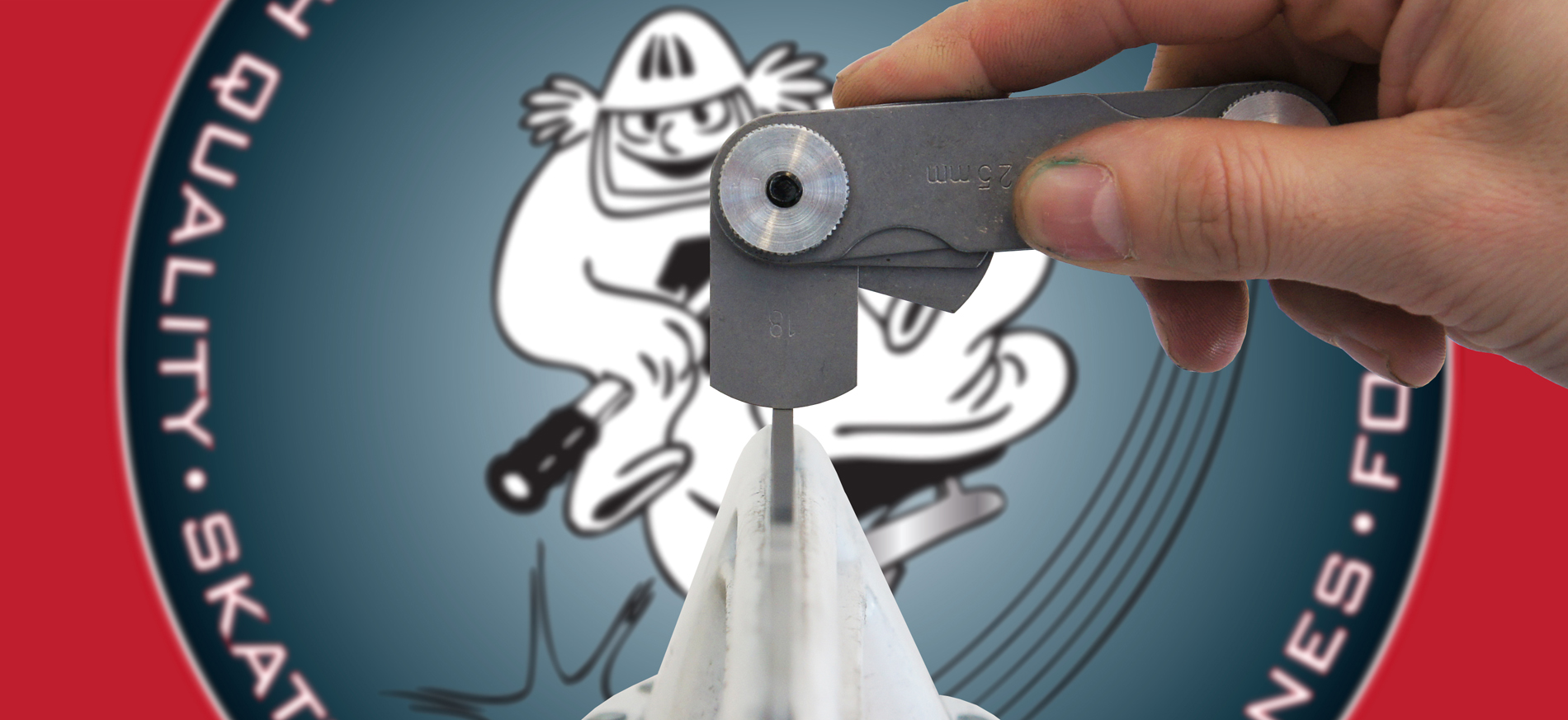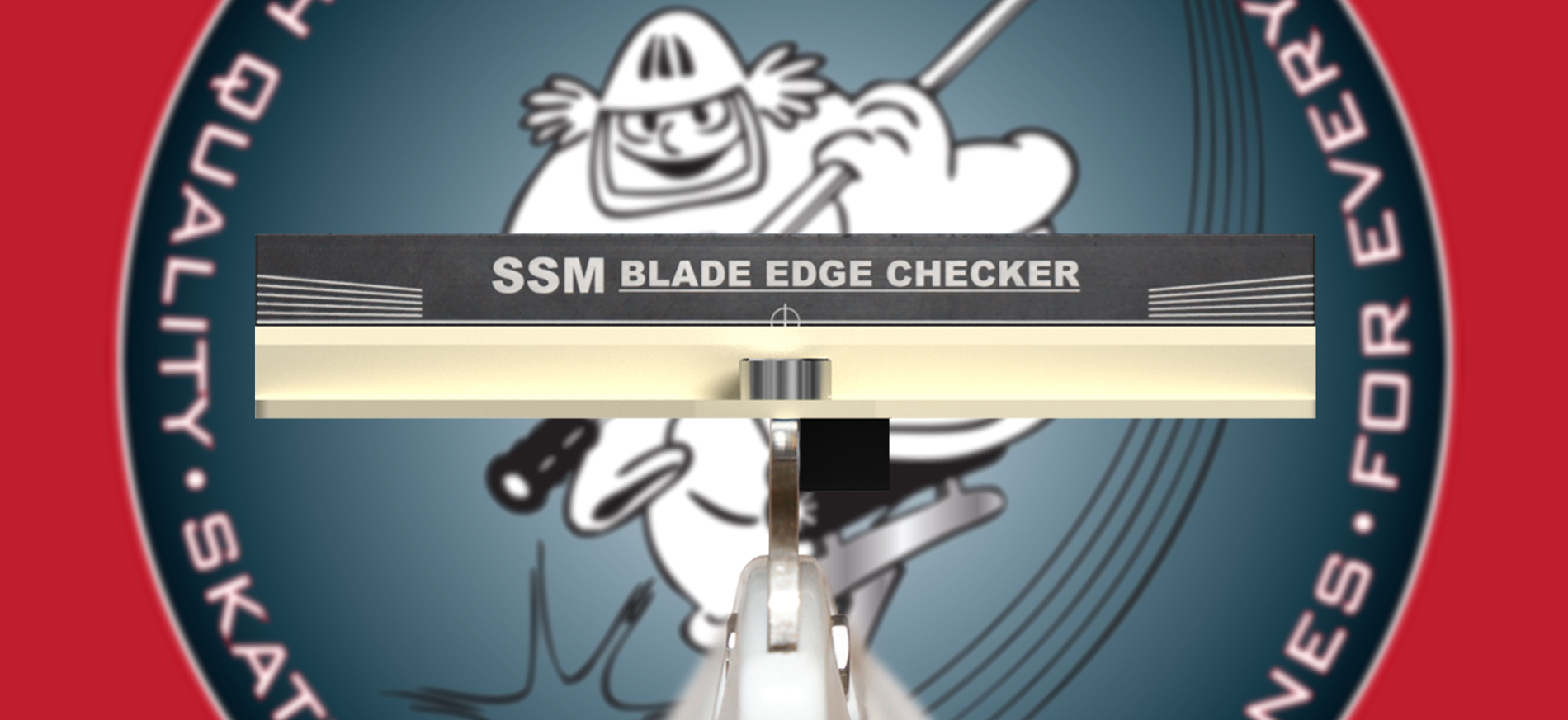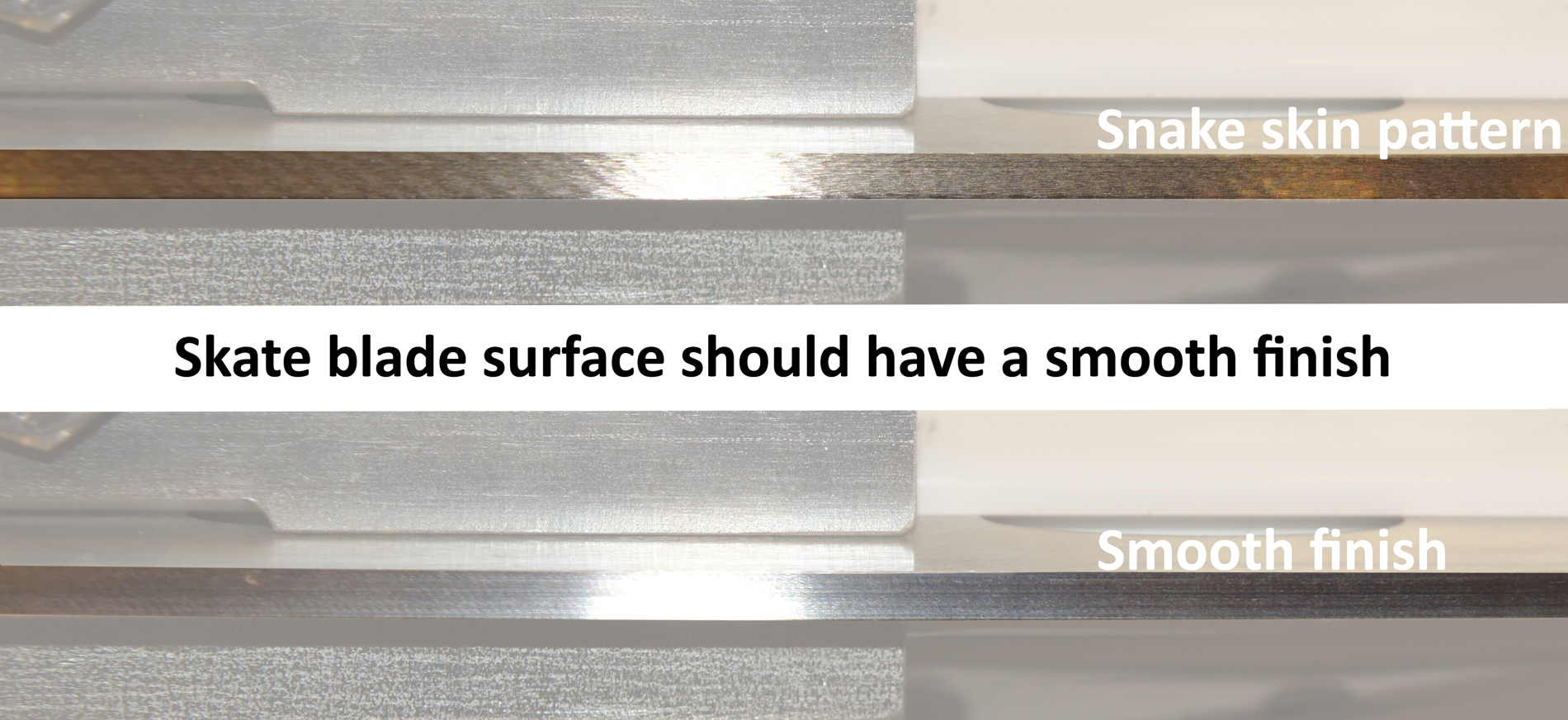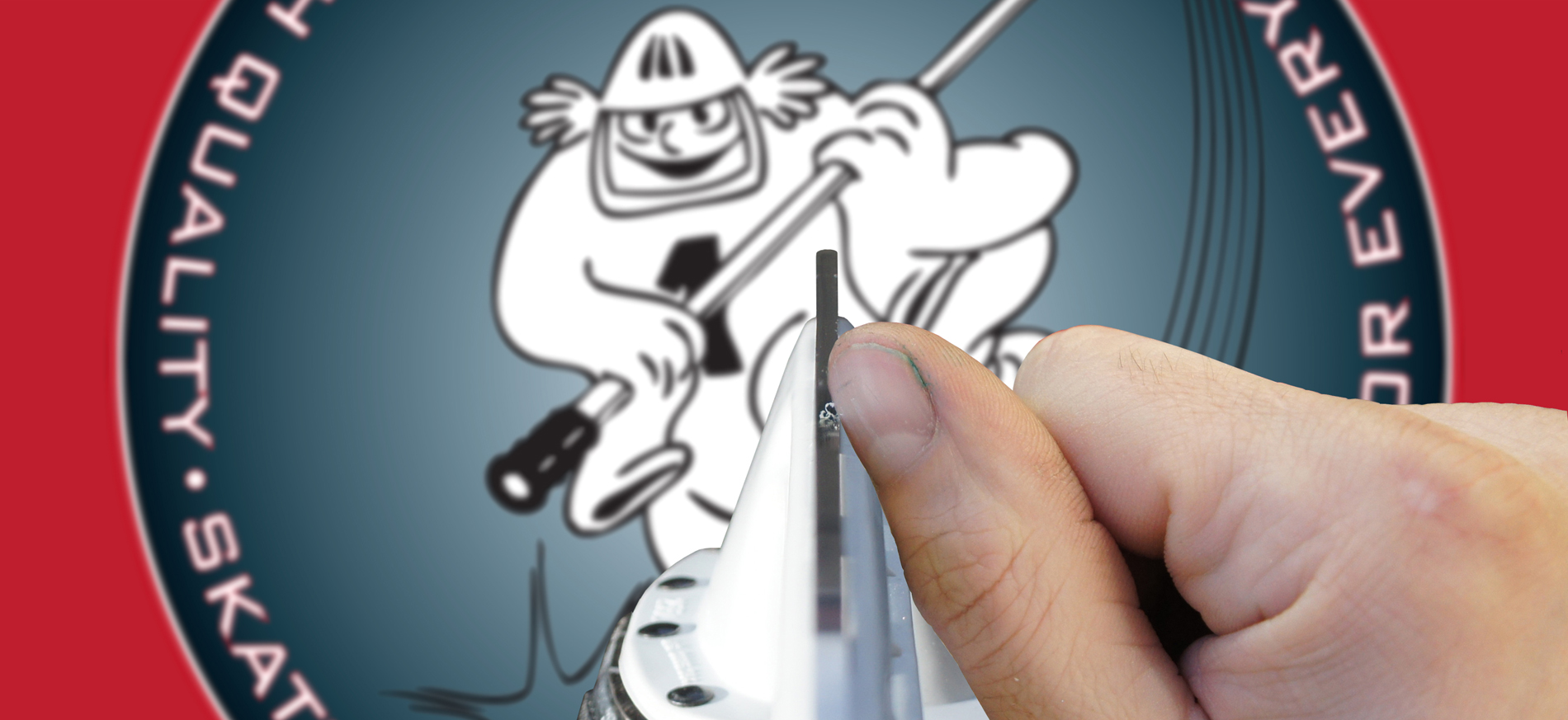Control the sharpening
Important
Here is advice on how to make sure the sharpening is perfect
Control the hollowness
This control can be used in two ways. Before you start the sharpening process you can check the existing hollowness on a skate in case the client wants to use the same hollowness again. The other way is to make sure the machine performs correctly. After you have sharpened the skate you can compare the result against the setting on the machine. On the picture below you can see our Radius gauge measurement tool RM2.

Control the sharpening
Sharpen the skate a few times back and forth. Use a hand hone (whetstone) to remove the burrs, then attach our BEC Blade edge checker. This tool will help you to be sure that the sharpening is correct (centered). If the tool is not aligned you need to adjust the setting on your machine. Once alignment has been reached you know that the machine is correctly adjusted. Attach the skate again and start the final sharpening process. Note that you can use the "witness mark" method as well; check our instruction manuals for more information regarding that. (Witness mark is the most accurate control available.)
The blade support device system featured on the SSM-2 models will keep centering of the sharpening even if the skate blade is somewhat bent (no other machines can match this). If you are using another system you need to straighten the skate blade (since almost every skate blade is somewhat bent) using our SKR Blade straightener. Otherwise the hollowness will not be centered along the blade.

Control the blade surface
As you sharpen, the grinding wheel needs to be dressed every now and then to make new grit available or to reshape it. Once you are done with the sharpening, the blade surface should have a smooth finish. A poor finish (wavy pattern or snake skin pattern) is a sign that the grinding wheel needs to be redressed. If you still get a poor finish and blade chatter, then this is a sign that the diamond is dull and needs to be replaced.

